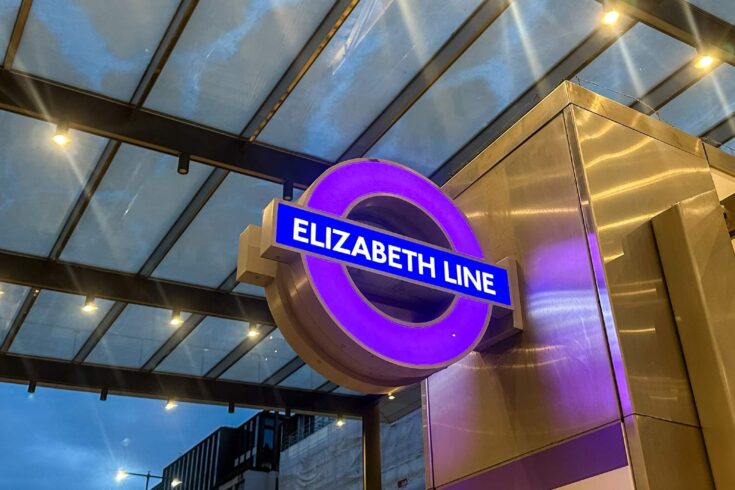To mark this, we are celebrating the achievements of British Geological Survey (BGS) scientists who have helped improve the journeys of millions living in or visiting London.
One of the UK’s most ambitious infrastructure projects, Crossrail has reshaped journeys across London and the home counties.
The new line has shortened journey times, provided more services and reduced overcrowding on other underground lines.
Innovative 3D technology
Behind this success lies a quiet engineering triumph: a pioneering 3D geological model that helped to make it all possible.
Crossrail engineers working on the construction of Farringdon Underground Station, one of the most complex hubs on the new Elizabeth line, faced a significant challenge.
The geology of central London, particularly around Farringdon, is notoriously complex.
Helping engineering tackle challenging geology
Layers of clay, sand and gravel, some in unpredictable pockets, are displaced by faults.
For a project involving deep tunnelling beneath London, not understanding the subsurface presented serious risks.
To help manage these risks, the BGS, a research centre of the Natural Environment Research Council (NERC), was brought in to develop a state-of-the-art 3D geological model.
Faster construction
This model became an essential tool for engineers, providing a live, evolving picture of ground conditions as tunnelling progressed.
The result was a significant reduction in risk, time, and cost including a 70% decrease in the need for in-tunnel testing.
It was the first time a 3D geological model had been used dynamically, in tandem with major tunnelling works in the UK.
Don Aldiss, Regional Geologist for London and South East England at the BGS (2003 to 2014), explained:
The Elizabeth line was built by the Crossrail project, one of the biggest construction projects in Europe, which created a high-capacity rail link between Berkshire, Essex and north Kent.
London underground tunnels are mostly built in the London Clay, which is a fairly straightforward tunnelling medium.
But in the Farringdon area, the geology is a lot more complicated. BGS were able to help because we had under development unique software that we could use to make a detailed 3D geological model.
Engineers could use that model when they were actually doing the tunnelling, to ensure it was done safely and efficiently and make significant savings of time and money.
Mapping previously unknown faults
The work also led to major scientific advances.
The BGS team refined their understanding of the Lambeth Group, a notoriously variable geological formation.
This helped map previously unknown faults and identify high-risk sand lenses that could have posed serious hazards during excavation.
David Entwistle, Senior Engineering Geologist, BGS (1983 to 2019), said:
The great thing about the project was that the complexity of the geology in that part of London meant that the faulting in that area had never been mapped before. It was unknown.
Having our 3D modelling software applied to discovery, the geology of Farringdon was wonderful to be part of. The whole project was state-of-the-art.
A vital new underground line
The Elizabeth line now carries more passengers than the London Overground.
In 2023 and 2024, the line generated £606 million in passenger income, 12% of the Transport for London’s total.
The new line also powered a boost in investment near stations.
Transport for London analysis found that between 2015 and 2022, 378,000 jobs were created within one kilometre of Elizabeth line stations.
Find out more about this project with our short film on YouTube.
Further information
See further information, including the application process and criteria for NERC Independent Fellowships.
UKRI press team contact
Email: press@ukri.org

